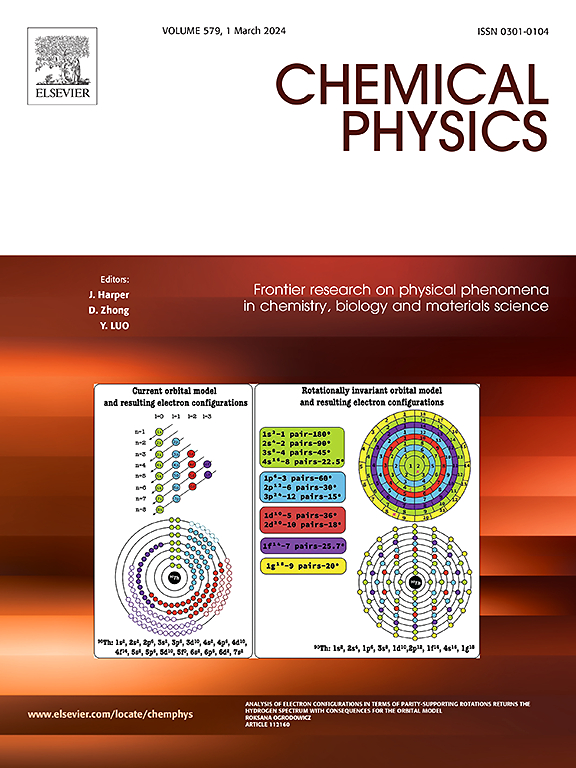过渡元素吸附B2S2单层膜的磁性能
IF 2
3区 化学
Q4 CHEMISTRY, PHYSICAL
引用次数: 0
摘要
本工作的目的是研究不同的过渡元素如何影响B2S2单层的磁性能。本工作将有助于揭示过渡元件与B2S2单层相互作用的微观机制。基于第一性自然原理,计算了不同过渡元素原子(Co、Cr、Fe、Mn、Ti、V、Cu、Ni和Zn)吸附在单层B2S2衬底上的材料的电子性能和磁性能。结果表明,不同的原子吸附产生不同的磁矩,总磁矩在0 ~ 4.00 μB之间,其中Cr-B2S2产生的磁矩最大,为4.00 μB。不同吸附体系的能带隙也不同,最小可达0.0039 eV,最大可达1.90 eV。价电子轨道杂化发生在过渡元素原子和邻近底物上的原子之间。经过计算,我们发现Tm原子是电荷供体,单层B2S2是电荷受体,并且电荷转移一般发生在Tm原子和相邻的S原子之间,整个Tm-B2S2体系为n型掺杂。计算结果表明,除了Zn原子外,其他原子都稳定地吸附在单层B2S2上,表明过渡元素原子(Tm)在单层B2S2上的吸附体系在自旋电子学和磁记忆方面具有潜在的应用前景。本文章由计算机程序翻译,如有差异,请以英文原文为准。
Magnetic properties of transition elements adsorbed B2S2 monolayers
The purpose of this work is to investigate how different transition elements can affect the magnetic properties of B2S2 monolayers. The present work will help to reveal the microscopic mechanisms of the interaction of transition elements with B2S2 monolayers. The electronic properties and magnetic properties of materials with different transition element atoms (Co, Cr, Fe, Mn, Ti, V, Cu, Ni and Zn) adsorbed on a monolayer of B2S2 substrate have been calculated based on the first nature principle. We found that different atoms adsorbed produce different magnetic moments, the total magnetic moment ranges from 0 to 4.00 μB, among which Cr-B2S2 produces the largest magnetic moment of 4.00 μB. The energy band gaps of the different adsorption systems are also different, with the minimum reaching 0.0039 eV and the maximum 1.90 eV. Valence electron orbital hybridization occurs between the transition element atoms and the atoms on the neighboring substrates. After calculation, we found that the Tm atoms are charge donors and the monolayer B2S2 is charge acceptors, and the charge transfer generally occurs between the Tm atoms and their neighboring S atoms, and the overall Tm-B2S2 system is n-type doped. The results are calculated to show that all atoms except Zn atoms are stably adsorbed in monolayer B2S2, and our study can demonstrate that the system of transition element atoms (Tm) adsorbed in monolayer B2S2 has potential applications in spintronics and magnetic memory.
求助全文
通过发布文献求助,成功后即可免费获取论文全文。
去求助
来源期刊

Chemical Physics
化学-物理:原子、分子和化学物理
CiteScore
4.60
自引率
4.30%
发文量
278
审稿时长
39 days
期刊介绍:
Chemical Physics publishes experimental and theoretical papers on all aspects of chemical physics. In this journal, experiments are related to theory, and in turn theoretical papers are related to present or future experiments. Subjects covered include: spectroscopy and molecular structure, interacting systems, relaxation phenomena, biological systems, materials, fundamental problems in molecular reactivity, molecular quantum theory and statistical mechanics. Computational chemistry studies of routine character are not appropriate for this journal.
 求助内容:
求助内容: 应助结果提醒方式:
应助结果提醒方式:


